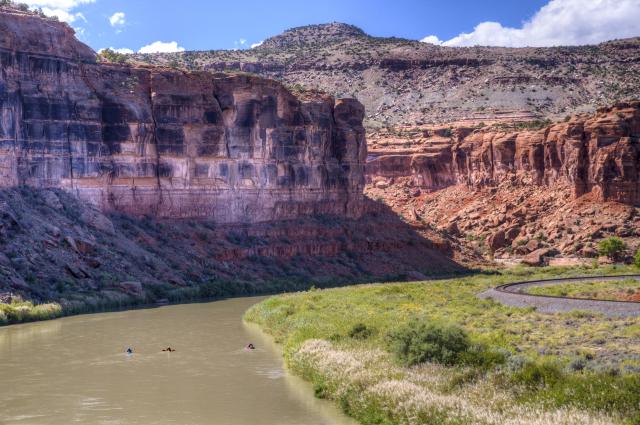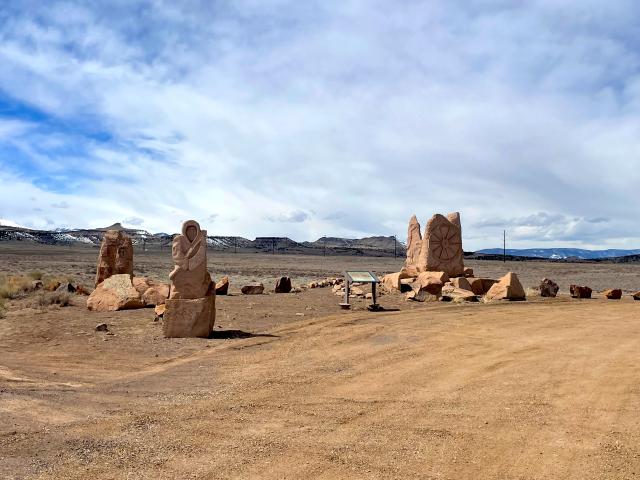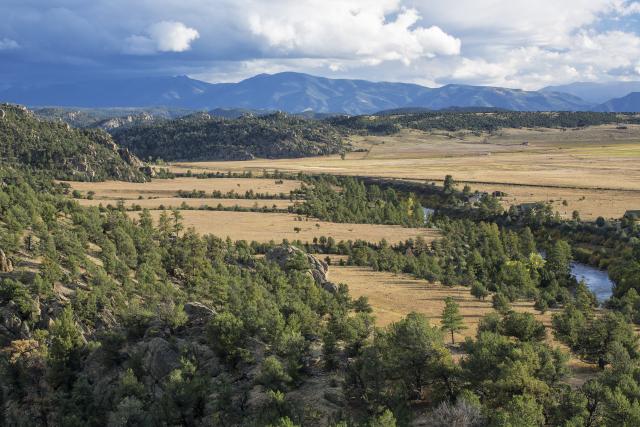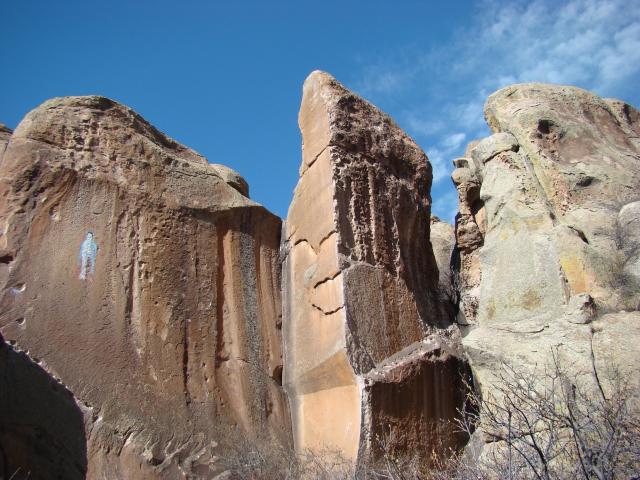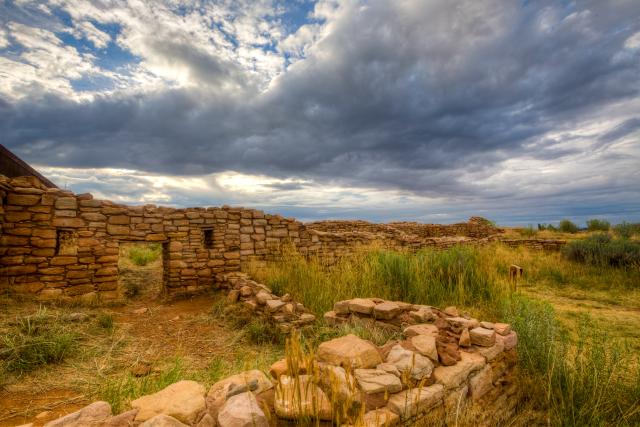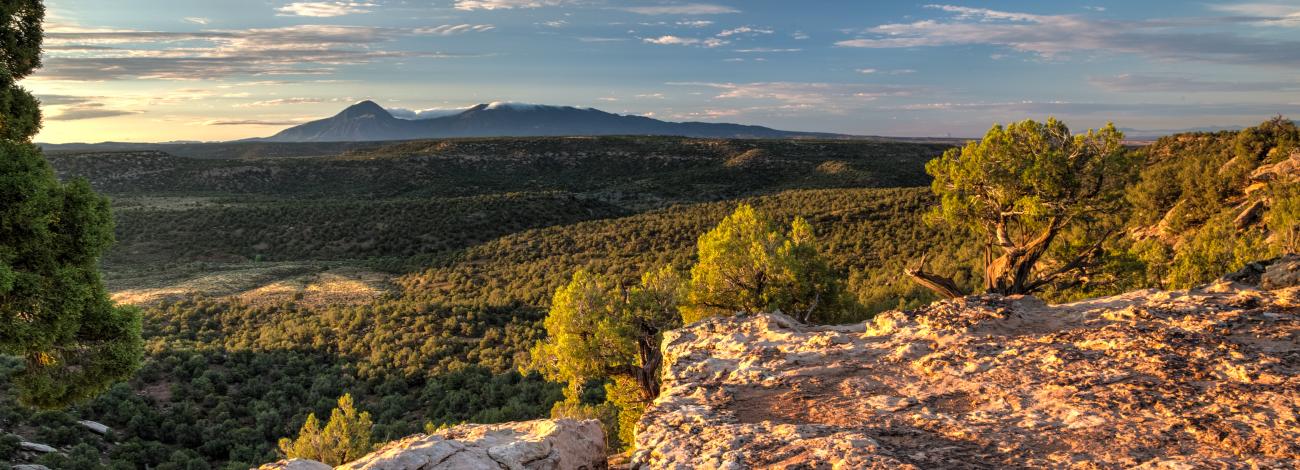
Cultural Sites in Colorado
Public lands in Colorado feature many unique and special cultural sites for our visitors to experience. Below are some highlighted areas to help guide your adventures on public lands. Related links can be found on the right. Please recreate responsibly when visiting public lands and leave no trace - public lands are here for past, present and future generations to enjoy.
Dominguez-Escalante Natural Conservation Area
The red-rock canyons and bluffs of Dominguez Escalante Natural Conservation Area (NCA) hold geological and paleontological resources spanning 600 million years in addition to cultural and historic sites from the past 10,000 years. The area is home to many wildlife species including mule deer, golden eagle, turkey, elk, mountain lion, black bear, and collard lizard. Rock imagery adorns the canyon walls and archaeological sites can be found along the mesas, demonstrating thousands of years of Native American use for hunting and seasonal travel from the Gunnison River Valley to the Uncompahgre Plateau. Throughout the wilderness you might find historic features left by the early miners and settlers who lived and worked in the area.
Old Spanish National Historic Trail
The Old Spanish National Historic Trial is a trail jointly managed by the Bureau of Land Management and the National Park Service that spans approximately 2,700 miles across New Mexico, Colorado, Utah, Arizona, Nevada, and California. Antonio Armijo led the first commercial caravan from Abiquiqu, New Mexico to Los Angeles in 1829 to trade textiles, but the trail network had been in existence for many years. The “Old Spanish Trail” evolved from indigenous footpaths, early trade and exploration routes, and horse and mule routes. The three main branches of the network all run through Colorado. The Old Spanish National Historic Trail traverses these Native territories:
Jicarilla Apache, Kizh (Gabrieleno), Taos Pueblo, Tigua (Tiwa), Vanyume, Timpanogos, Nuwuwu (Chemehuevi), Chumash, Dine Bikeyah, Yuhaaviatam/Maarenga’yam (Serrano), Nuwuvi (Southern Paiute), Hopitutskwa, Tongva (Gabrieleno), Tsestho’e (Cheyenne), Newe Sogobia (Western Shoshone), Numunuu Sookobitu (Comanche), Pueblos, Hualapai, Pipa Aha Macav (Mojave), Nuu-agha-tuvu-pu (Ute), Nde Konitsqqii Gokiyaa (Lipan Apache)
Browns Canyon National Monument
Browns Canyon National Monument, including the Browns Canyon Wilderness Study Area (WSA), covers approximately 22,000 acres of federally and state-managed public lands in Chaffee County, Colorado. Traditional inhabitants of Browns Canyon include the ancestors of Ute, Apache, Shoshone, and Comanche tribes. The story of people living in the upper Arkansas River valley is told through sites and artifacts dating back 11,000 years. Many of these sites are seasonal camps that include flint knapping remnants, and tipi rings as well as rock structures. The discovery of gold near the Arkansas River in 1859 also brought an influx of people, and historic prospecting sites can still be found in the monument. In 2022, BLM Utah partnered with Living Heritage Anthropology to host a rafting trip for Ute youth and elders, providing an opportunity for reconnection to these lands. This trip holds importance as a demonstration of co-stewardship between BLM and the tribes.
Penitente Canyon
Within San Luis Valley is Penitente Canyon known for its technical rock-climbing routes and striking rock types. This red rock canyon was formed nearly 30 million years ago in the aftermath of the La Garita Caldera. Though it is an amazing site for recreation, Penitente Canyon also holds much cultural and religious significance as demonstrated by the rock imagery found throughout the site. Ute, Apache, and Pueblo peoples were all known to have lived in the San Luis Valley and their rock imagery can still be seen throughout the walls of the canyon. This canyon also served as a remote gathering place for the religious sect known as Los Hermanos Penitente, a group of Catholic men who practiced severe religious rituals such as self-flagellation and crucifixion reenactments. Within the site you can still find remains of crosses that were erected, and ox carts used on the Old Spanish Trail.
Canyons of the Ancients National Monument
Canyons of the Ancients National Monument (CANM) is located in the Four Corners region of southwest Colorado and encompasses 174,000 acres of federal land. Containing the highest known archeological site density in the United States, CANM is rich with well-preserved cultural landscapes and resources. Sites that can be found in the monument include villages, field houses, check dams, reservoirs, great kivas, cliff dwellings, shrines, agricultural fields, rock art and sweat lodges. Pottery shards and artifacts are plentiful within the Monument, but it’s important to leave these items alone during your visit out of respect for descendant tribes. Ancestral Puebloan sites are often most visible, but as a historically high traffic region for Native peoples, other tribes have ties to these lands too, including the Utes and the Navajo Nation. Canyons of the Ancients still holds great significance to the tribes today, and many continue to visit to reconnect with ancestors and the stories of their people.

